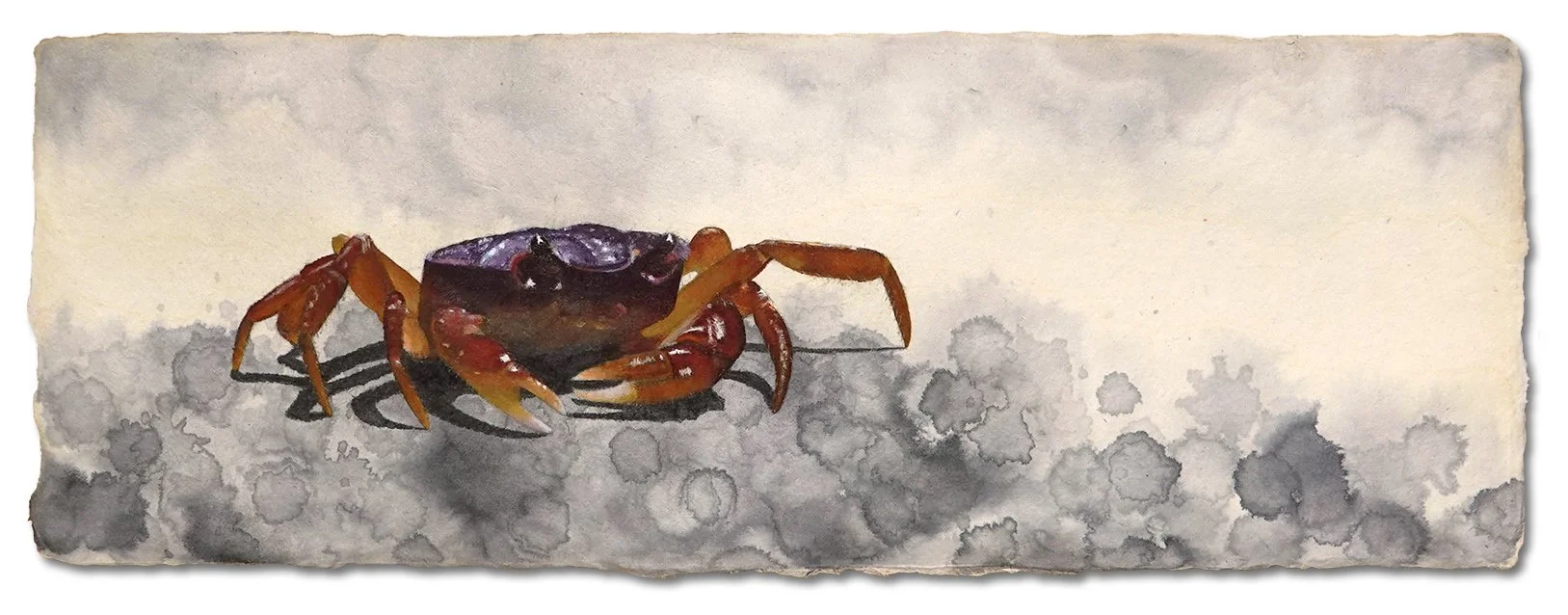In my travels in Japan, I’ve repeatedly come across calligraphy tools, artwork, and even participated in a 5th grade calligraphy lesson last year in Yamanashi City! In art classrooms in the US, the primary liquid ink we use is India ink (sometimes called China ink). Sumi is a bit different; the primary differentiator is that liquid sumi is typically soot bound with a synthetic glue that is not waterproof, so it can be lifted even after it dries. India ink is typically waterproof after drying. Sumi also has a more expressive and variable tone compared to the uniform performance of India ink.
In Japan, there is a type of artwork called sumi-e, which are ink wash paintings. They are often 100% sumi, though some add small accents with red ink and you can find some outliers that expand the color palette just a bit further. By adding acrylic paint, however, I have definitely strayed outside of making a traditional sumi-e. This would be better classified as mixed media, inspired by sumi-e. I painted atop a washi paper I purchased at Nao Washi in Saga.
The subject of this painting is a Japanese native freshwater crab (Geothelphusa dehaani) called sawagani (サワガニ). I have seen these crabs all around Japan, often in and around streams but also venturing further afield in evening rains. I encountered this one on the street while biking home from the studio one night right after the rain had stopped.
This is After the Rain, sumi and acrylic on washi paper, 5.3 x 15", 2025.
